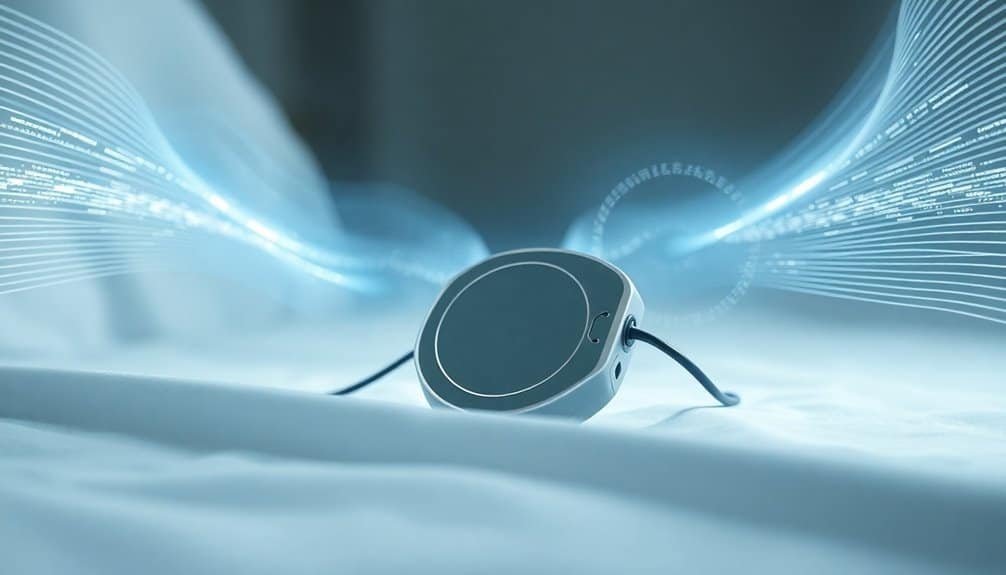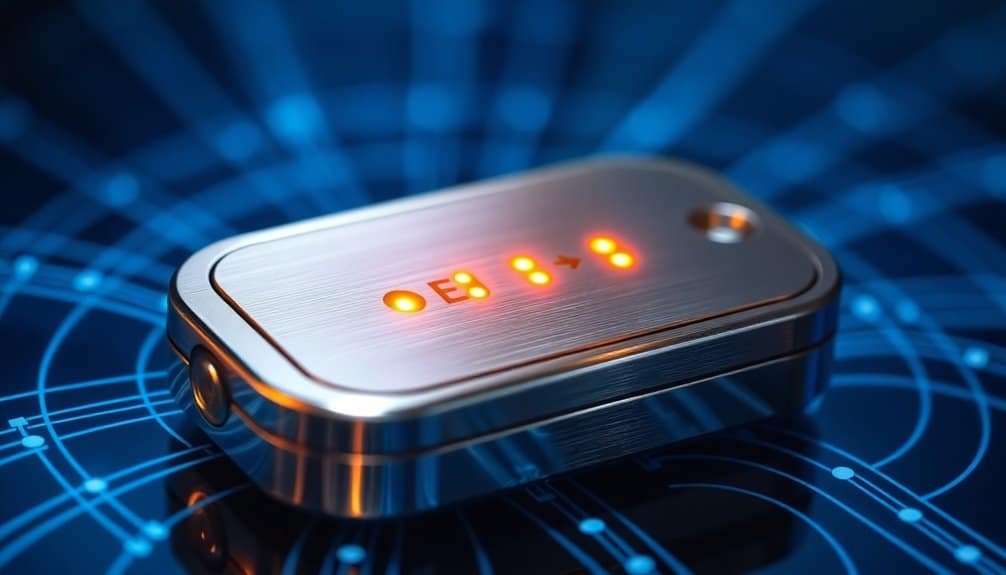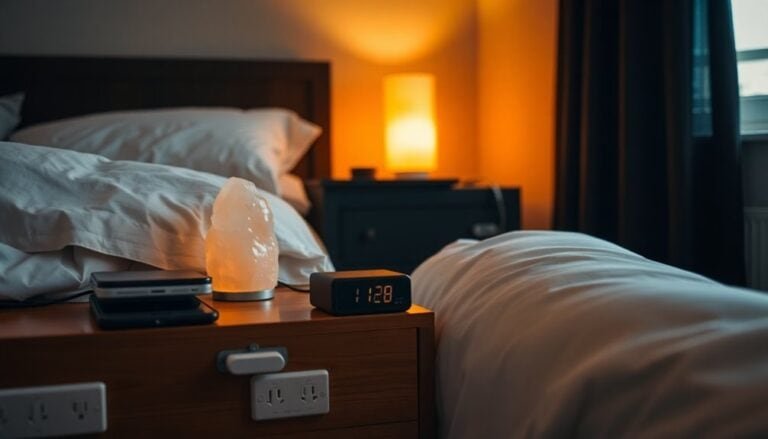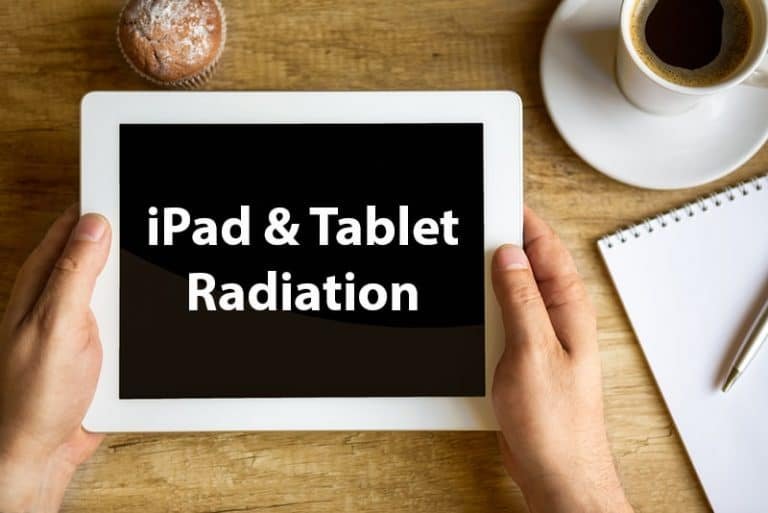Protecting Pacemaker Patients From EMF
Maintain at least six inches from household devices like microwaves and hair dryers, and two feet from stronger sources such as induction cooktops. Avoid close proximity to power lines, electric tools, and welding equipment.
Use field indicators to monitor EMF levels and adhere to the manufacturer’s guidelines. Regular medical check-ups ensure your pacemaker remains unaffected, enhancing your safety in various environments.
Disclaimer: As an affiliate, I may collect a share of sales from the links on this page.
Understanding the Risks of EMF Exposure for Pacemaker Patients

Electromagnetic fields (EMF) are everywhere, and for patients with pacemakers, exposure to these fields poses significant risks.
Power lines and household appliances emit electrical fields that can cause electromagnetic interference (EMI). Electric tools and welding cables contribute to potential disruptions in pacemaker function. EAS systems may also pose potential risks in retail environments if patients linger too long near sensors.
Induction cooktops present varying risks, depending on pacemaker configurations. Security gates can lead to inappropriate atrial sensing, resulting in ventricular pacing issues.
Patients often experience ventricular oversensing, which causes palpitations and dizziness. Proper lead placement, use of bipolar leads, and regular checks are essential for reducing these risks and maintaining pacemaker efficiency in EMF-rich environments.
Safe Thresholds for Magnetic Field Exposure
Magnetic field exposure can greatly impact pacemaker functionality, particularly when it exceeds established safety thresholds.
The ACGIH recommends avoiding fields over 1.0 gauss for pacemaker wearers, while Health Canada advises against exposures exceeding 0.5 mT (5 gauss) in clinical settings. The ICNIRP’s occupational limit allows up to 1,000 µT (10 gauss), but sensitive devices may still be affected. General public exposure standards range from 200–500 µT (2–5 gauss). Always check your specific device manual for limitations, consult your physician, and conduct risk assessments at workplaces with magnetic particle equipment for safe distance measurements.
Stay informed to protect your health.
Household Devices and Their Precautions

While most household devices don’t pose a significant threat to pacemaker functionality, you should still exercise caution with certain appliances.
Keep at least six inches away from microwaves, hair dryers, and electric shavers to reduce interference risk. Induction hobs require a two-foot distance due to strong electromagnetic fields. It is important to recognize that EMI can temporarily interfere with pacemakers if proper precautions are not taken. Additionally, be mindful of EMF radiation risks from nearby electronics that can contribute to potential issues.
Avoid transformer boxes and metal detectors, as they can disrupt pacemaker operation. Generally, devices like electric blankets, kitchen appliances, and computers are safe when used correctly.
Regularly check your devices, maintain awareness of your environment, and consult healthcare professionals for tailored advice to guarantee ideal safety around household appliances.
Workplace Safety Measures for Pacemaker Wearers
Workplace environments can pose unique challenges for individuals with pacemakers, particularly due to the presence of various electromagnetic fields (EMF).
To guarantee safety, identify and monitor EMF sources, using tools like Field Indicators. Implement safety guidelines based on manufacturer recommendations and conduct employee training to recognize symptoms of EMF interference.
Restrict access to high EMF areas and post warning signs accordingly. Provide device-specific safety measures and encourage regular healthcare check-ups.
Collaborate with healthcare providers for customized advice, guaranteeing all measures comply with regulatory standards.
Continuously update protocols to reflect emerging technologies and best practices in managing EMF exposure.
Advanced Technologies in Pacemaker Design

As cardiac technology evolves, new advancements in pacemaker design enhance functionality and improve patient outcomes.
Leadless pacemakers eliminate cumbersome leads, providing a compact solution for heart pacing. The world’s smallest light-activated pacemakers use minimal battery power, increasing efficiency. Flexible materials adapt to body movements, reducing complications.
AI integration allows for ideal pacing site predictions, enhancing performance. Advances in microelectronics create smaller, energy-efficient devices. Wireless communication enables remote monitoring, facilitating timely interventions.
Lithium-polymer batteries extend device lifespan considerably. Overall, these innovations promise improved safety, personalized treatments, and more effective patient care while minimizing risks associated with traditional devices.
General Safety Advice for Daily Activities
When you have a pacemaker, following specific safety advice for daily activities is essential to guarantee proper device function and personal safety.
Avoid strong magnetic fields from appliances like microwaves and keep devices such as televisions at a safe distance. Limit headphone use, especially those with strong magnets.
In the workplace, stay clear of welding activities and utilize protective gear when near electromagnetic fields.
During travel, inform airport security of your pacemaker and maintain distance from car ignition systems.
Finally, be cautious with entertainment activities, avoiding strong magnetic games and high-power music systems to reduce interference risks. Additionally, consider minimizing exposure to EMF radiation sources to further protect your pacemaker’s functionality.
The Importance of Regular Medical Consultations
The necessity of regular medical consultations after pacemaker implantation guarantees ideal device performance and patient safety. Frequent check-ups allow for early assessments, confirming proper function and monitoring battery life.
You’ll have adjustments made to optimize settings, enhance efficacy, and extend battery longevity. Regular inspections for infection and erosion at the generator site are essential.
Evaluating lead integrity and measuring lead impedance prevents potential device malfunctions. These consultations also facilitate patient education, keeping you informed about pacemaker function.
Ultimately, tailored adjustments based on diagnostic data enhance personalized care and promote proactive management of your heart health needs.
Frequently Asked Questions
Can Pacemakers Interfere With Other Electronic Devices?
Pacemakers don’t greatly interfere with other electronic devices. You’ll find that they emit minimal electromagnetic fields. Focus instead on avoiding strong external sources of electromagnetic interference to guarantee smooth operation of both your pacemaker and nearby devices.
What Symptoms Indicate Pacemaker Interference?
Like a whisper in your chest, symptoms of pacemaker interference can include irregular heartbeats, a heavy chest sensation, and inappropriate pacing responses. If you notice these signs, consult your healthcare provider immediately for guidance.
Are Certain Professions Safer for Pacemaker Patients?
Certain professions are indeed safer for you. Jobs with minimal electromagnetic field exposure, like administrative roles, pose lower risks, while high-risk professions, such as welding, require careful precautions to guarantee your safety and well-being.
How Often Should Pacemakers Be Checked Post-Interference Exposure?
After interference exposure, you should get your pacemaker checked immediately using ECG and EGM. Regular follow-ups are essential based on your doctor’s advice, your health status, and the severity of the exposure you experienced.
Can Travel Affect Pacemaker Function or Settings?
Travel can impact pacemaker function or settings. You should consult your doctor before traveling, carry your Medical Device ID Card, and inform flight attendants during flights to guarantee your safety and device integrity while away.
Conclusion
Protecting pacemaker patients from electromagnetic fields is crucial. Recognize potential threats, maintain safe exposure levels, and be aware of household devices. Workplace safety measures should emphasize avoiding strong magnetic fields. Although innovative pacemaker designs reduce risks, regular medical consultations remain vital. Like knights shielding from dragons, take these precautions seriously to protect your health in today’s technologically advanced world.




